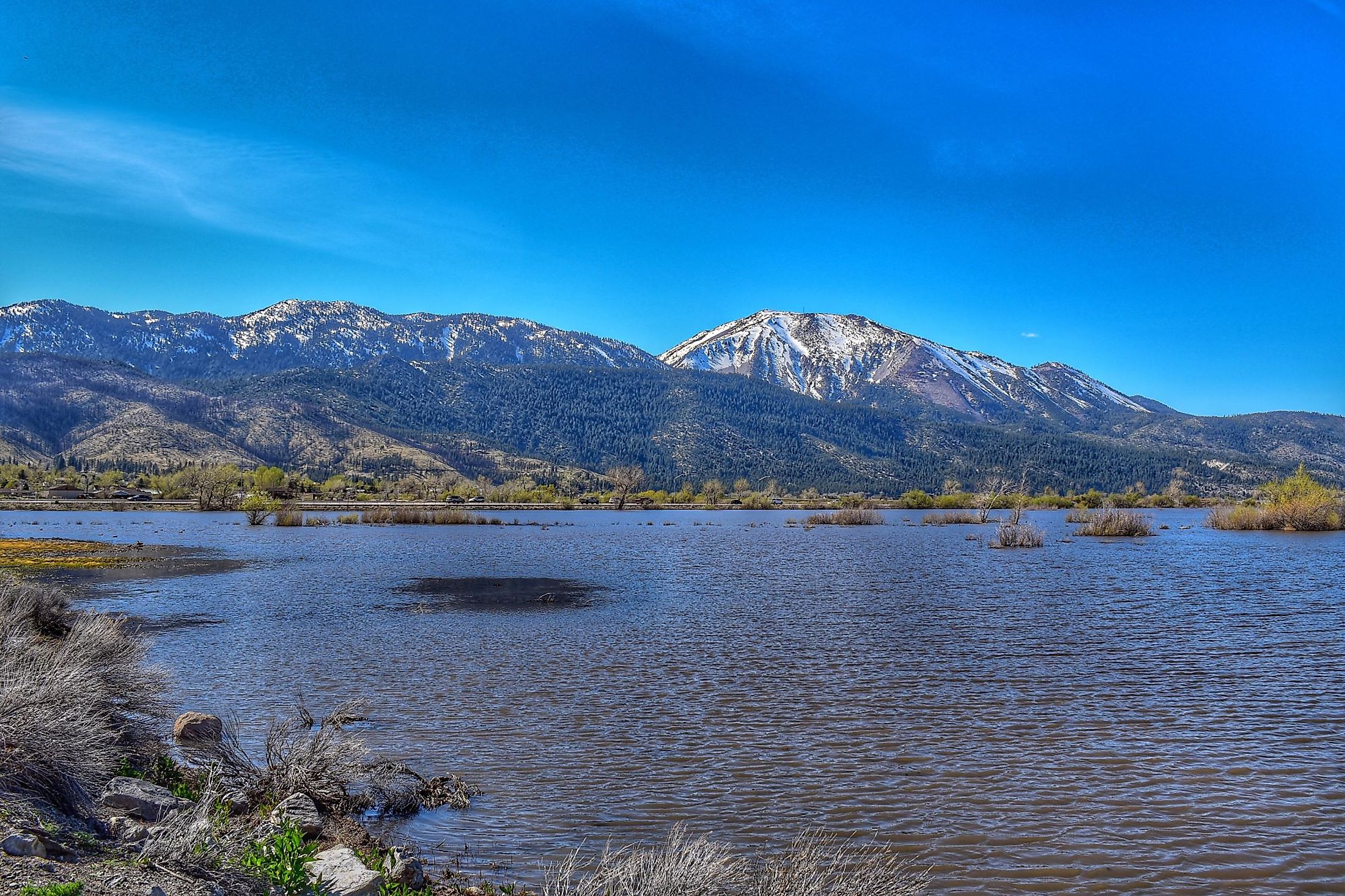
Washoe Lake, Nevada
Washoe Lake is nestled in the Washoe Valley of the picturesque desert landscape of the Sierra Nevada. With a shallow depth of 12 feet, Washoe lake is eutrophic, making for good warm water fishing. Weather is favorable year-round, boasting Washoe Lake as a destination for outdoor recreation. When the winds kick up, also referred to as the Washoe Zephyr, colorful sails of windsurfers and kiteboarders are spotted in abundance throughout the summer.
Geography Of Washoe Lake
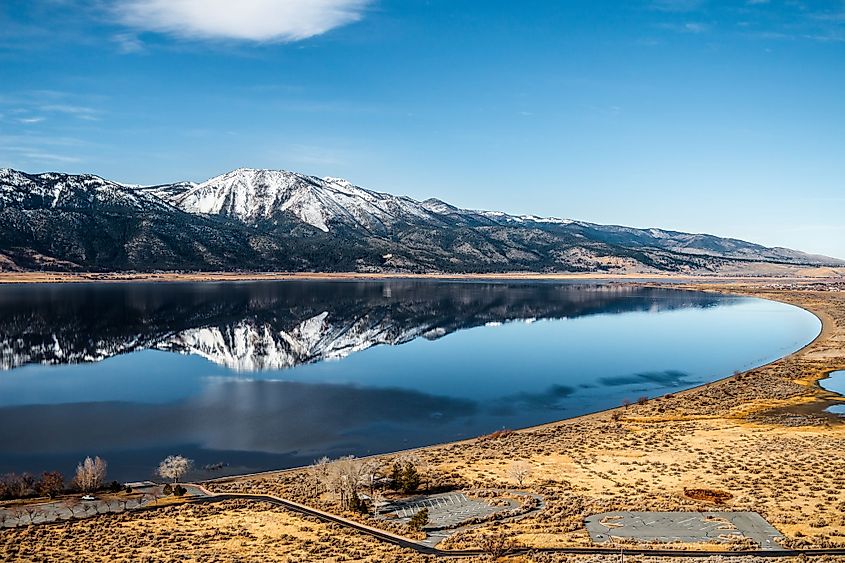
Wedged between Reno to the north and the state capital Carson City to the south, Washoe Lake can be found in Nevada's Washoe County. It is loved among locals as an alternative location for outdoor recreation from the busy waters of Lake Tahoe, which is 35 miles west. The Washoe Lake State Park is located on the south and southeast sides of the lake and contains campgrounds, equestrian facilities, picnicking, and hiking trails. New Washoe City is situated in the northeast. In the north, Washoe City, Little Washoe Lake Park, which rests on Little Washoe Lake, Steamboat Creek, and the Washoe Lake narrow, are located. On the west side, US Highway 395 follows the length of the lake and has a lookout to the southwest. Washoe Lake receives its water source from streams flowing from the Carson Mountain Range and Virginia Mountains. These creeks include Franktown Creek, Ophir Creek, Davis Creek, and Winters Creek. Steamboat Creek is the primary outflow found on Washoe Lake and heads north to join the Truckee River. Wetlands make up the northern and southern shores of Washoe Lake.
Geology Around Washoe Lake
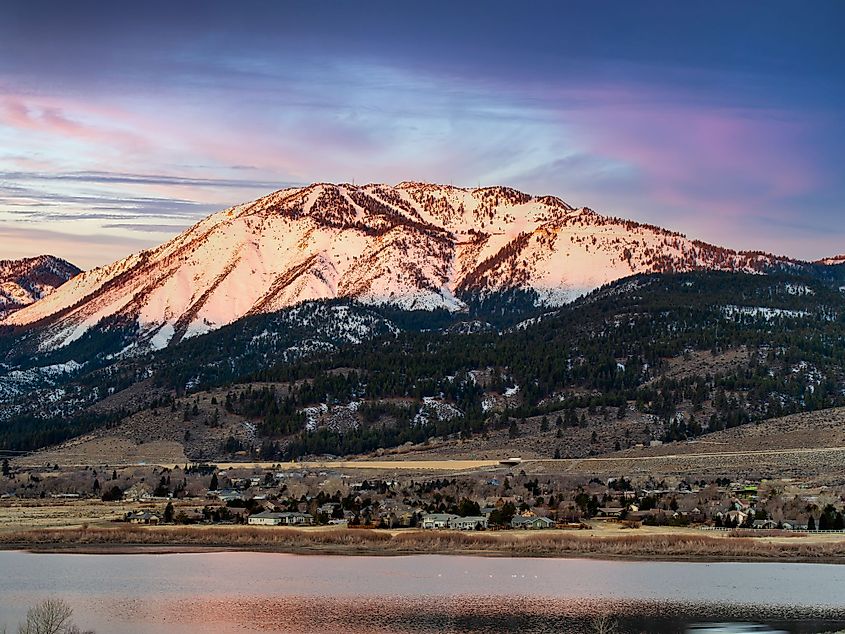
Washoe Lake is situated in the eastern foothills of the Sierra Nevada, and from its banks, one can ogle at the impressive Carson Mountain Range and Virginia Mountains. Washoe Lake resides in the south to central proximity of the quadrangle, a seismically active area of the eastern foothills. The quadrangle comprises Triassic and Jurassic metasedimentary and metavolcanic rock made of cretaceous granite and granodiorite. This is followed by sediment and tertiary layer that features intrusions and a Miocene layer of basaltic a dacitic lava. On the surface, during the Pleistocene period, moraines, debris flows deposits, and glacial washes formed the area around Washoe Lake and the Washoe Valley. Much of the sand that creates the sand dunes around that lake was eroded from the nearby mountains.
History Of Washoe Lake
Before the first permanent structures and settlers, the land belonged to the Washoe Tribe. With the discovery of gold and silver nearby in the 19th century, miners and loggers descended upon the Washoe Valley. With a growing population, there was a need to increase the food supply, so farming became a bustling industry. This saw the manipulation of the north shore wetland, or Washoe Marsh, on which a causeway was constructed. All along the shoreline, sawmills and quartz mills began to spring up. But as quickly as the gold rush started, it ended, and those who stayed in the Washoe Valley turned to the ranch as means of making ends meet. As for the Washoe Tribe, with the loss of hunting grounds, many joined the settlers in farming and ranching. Jumping forward, Washoe Lake State Park was established in 1977. This designation would protect the southeastern shore and recreation area for generations to come.
Droughts Of Washoe Lake
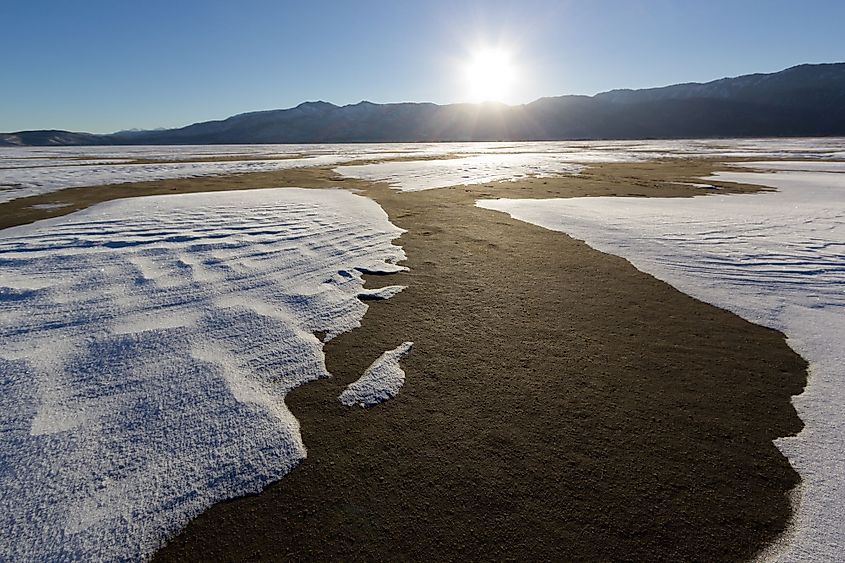
Being a shallow lake and warm body of water, Washoe lake is no stranger to the severe arid and drought conditions familiar to the West Coast. The lake dried entirely in 1992, followed by the years 1994 and 2004. As of 2022, the western drought that is causing historic evaporation of bodies of water such as Lake Mead is also evident at Washoe Lake. Although largely weather and climate-related, low inflow and the northern part of the lake being used for irrigation are all factors.
Recreation At Washoe Lake
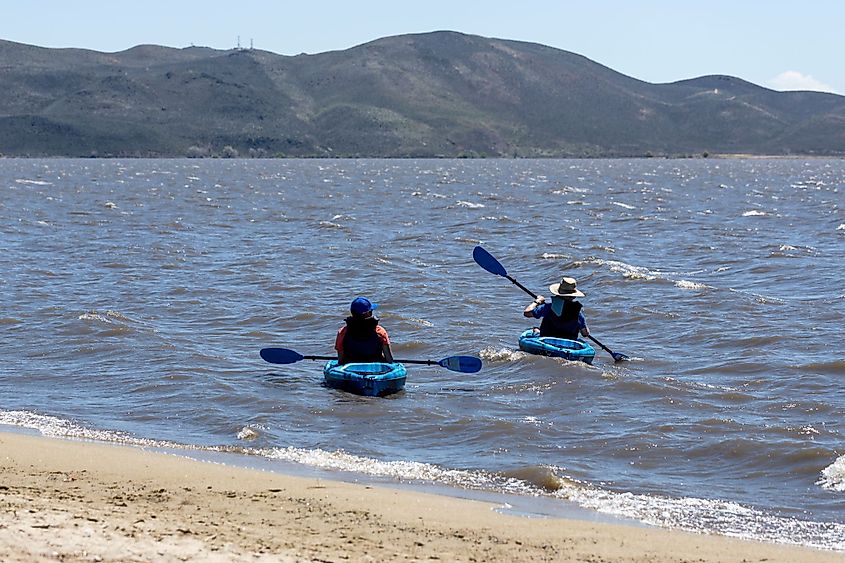
Washoe Lake offers several recreational activities. These include boating, fishing, hiking, camping, hunting, picnicking, horseback riding, and birding, to name a few. Washoe Lake State Park is one of six Nevada state parks where the American Discovery Trail can be accessed. This backcountry trail spans over 6,800 miles scaling over 14 mountain ranges but covers 500 miles within the state of Nevada. Additionally, other trails can be found throughout the park and cater to motorized vehicles, horseback riding, and hikers. Fishing is a popular activity to do on Washoe Lake, with two boat ramps known as the north and south boat launches available for public use.
Wildlife Of Washoe Lake
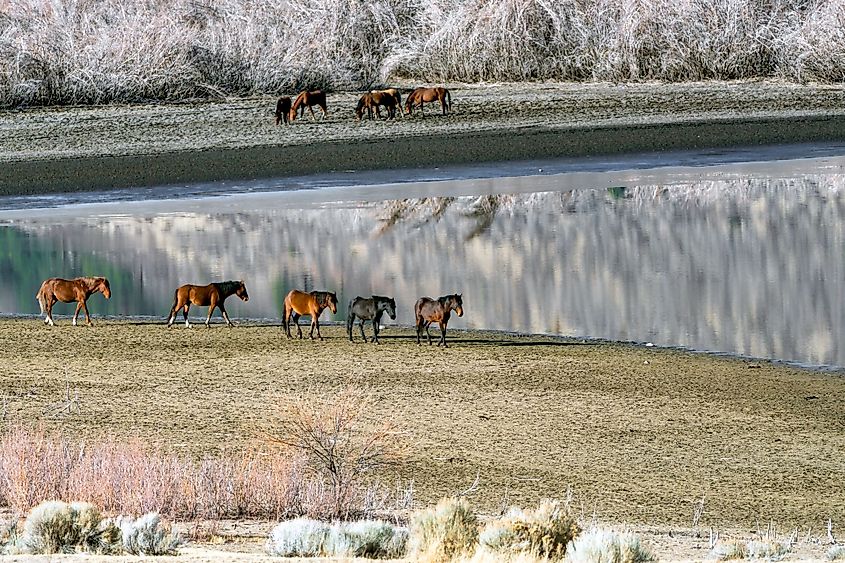
Following the last drought of 2004, the fish population was replenished on the lake by the Nevada Division of Wildlife, which has been stocking the lake ever since. Fish species available for catch include Sacramento perch, white bass, carp, and catfish. Of other species, Washoe Lake is a renowned destination for observing migratory species, with 100 varieties of birds known to frequent the shores. Notable species include pelicans, great blue herons, night herons, and white-faced ibis. Visitors should be cautious of rattlesnakes, although a rare sight, this reptile is native to the region. Other creatures include coyotes, eagles, deer, and hawks.











